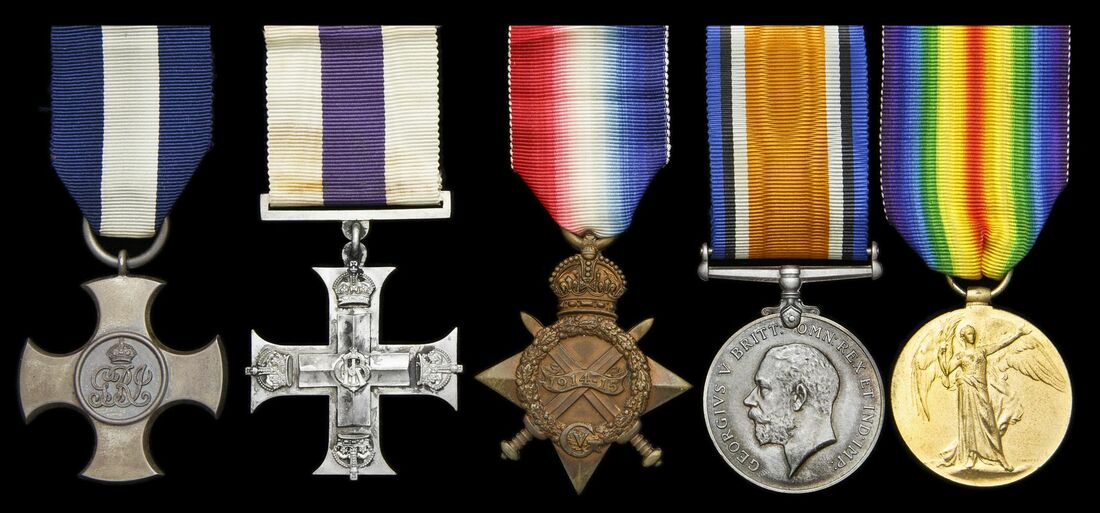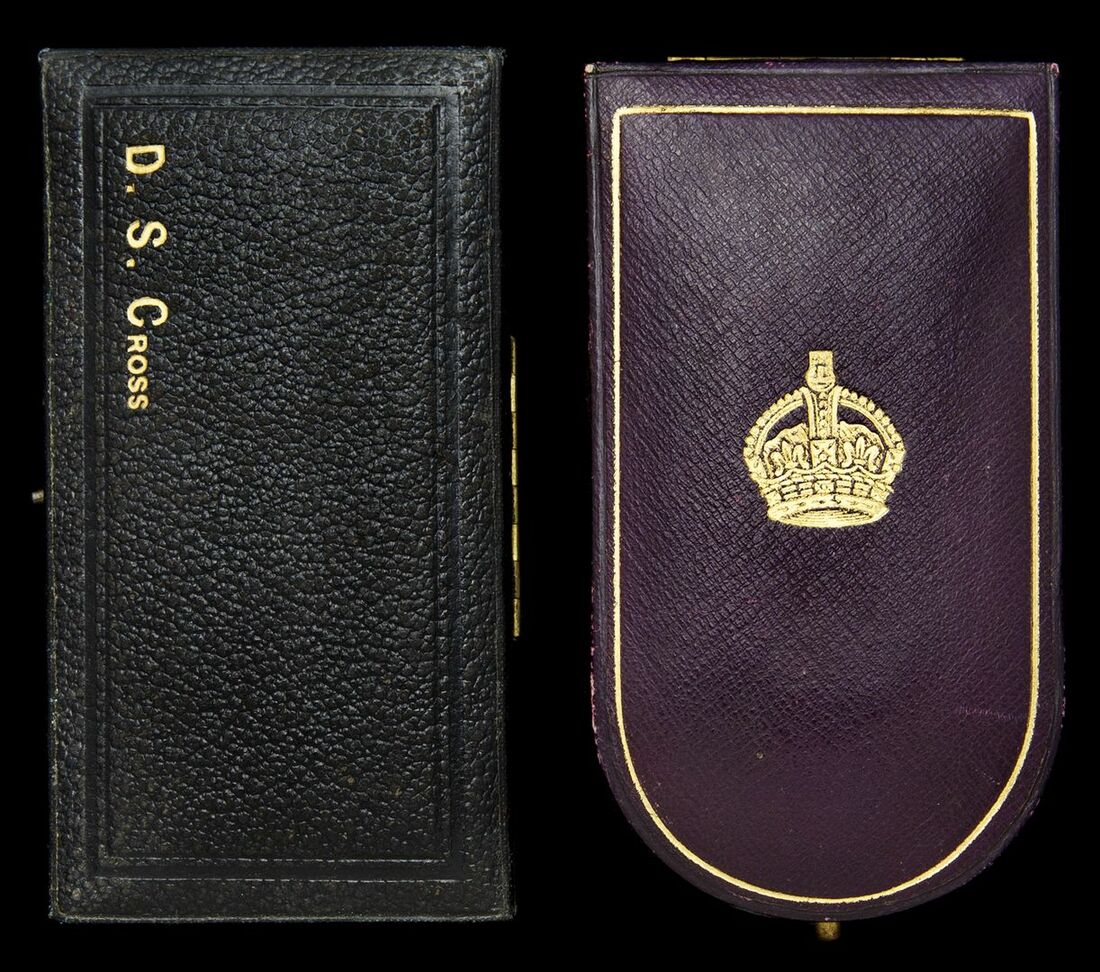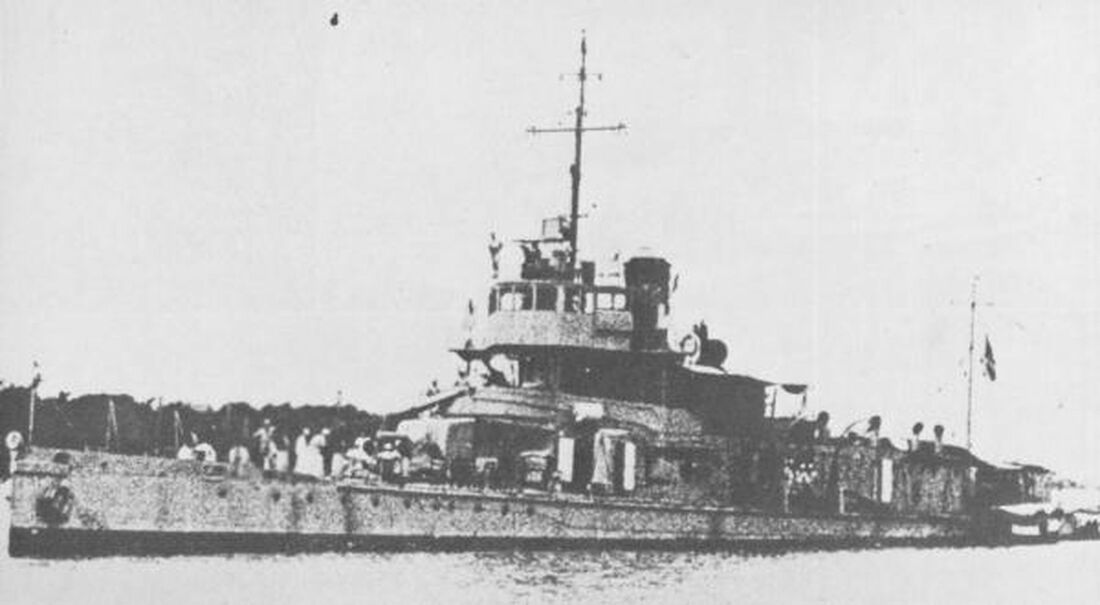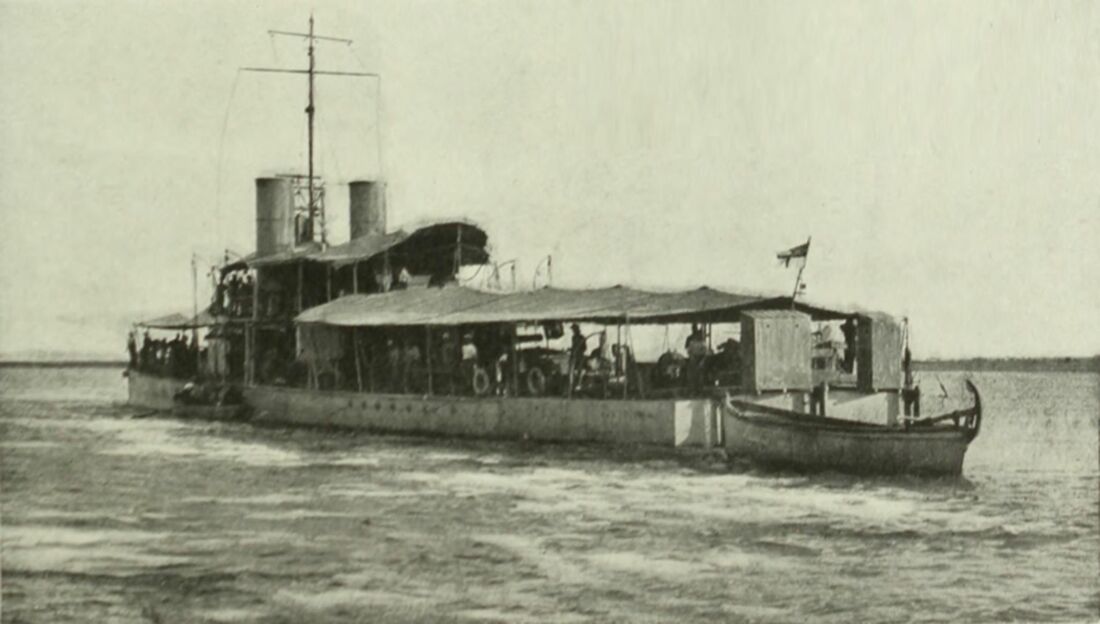Auction: 24001 - Orders, Decorations and Medals
Lot: 124
An outstanding Mespotamia operations D.S.C. and M.C. group of five awarded to Lieutenant Sir J. A. H. Wood, 2nd Baronet Wood, Royal Naval Volunteer Reserve, late East Surrey Regiment, who was severely wounded at Kut in March 1917, having served in the epic encounter on the advance to Baghdad on the Tigris whilst in the gunboat Moth
Having earned a brace of 'mentions' to go alongside his two decorations for the Great War, he returned to the fold with the Coastal Forces during the Second World War
Distinguished Service Cross, G.V.R., hallmarks for 1918; Military Cross, G.V.R.; 1914-15 Star (2. Lieut. J. A. H. Wood. E. Surr. R.); British War and Victory Medals (Lieut. J. A. H. Wood. R.N.V.R.), extremely fine and a highly unusual combination (5)
D.S.C. London Gazette 21 September 1917:
'‘For coolness and resource under very heavy fire, in firing with machine-guns on Turkish infantry and machine-guns, when all other men were employed in working the main armament of 6-inch, 12-pounder and pom-poms.’
M.C. London Gazette 27 March 1915.
'For gallantry, skill, and daring on the night of 15-16 February 1915, in the guidance of the attacking party near Ypres, and for a similar act of gallantry on the next night, when he voluntarily led the 84th Brigade in the operations.'
M.I.D. London Gazette 22 June 1915 & 15 August 1917.
John Arthur Haigh Wood was born on 22 May 1888 at Yarpole, Hereford, son of Sir John Wood, 1st Baronet, who was a former Conservative Member of Parliament for the Staylbridge Division of Cheshire.
Wood was educated at Stubbington House School, Fareham, Hampshire, and at H.M.S. Britannia Naval College. He gained the rank of Lieutenant in the service of the Royal Navy Volunteer Reserve and in his civilian life was admitted to Inner Temple in 1912 and was entitled to practice as a Barrister-at-law.
He joined the East Surrey Regiment as 2nd Lieutenant (on probation) on 1 September 1914 and serves overseas in France from 4 January 1915 and quickly goes on to win the newly designated M.C., being promoted Captain on 12 April 1915 (London Gazette 10 July 1915, refers), but then goes on to resign his commission on 3 November 1915.
Prior to resigning his commission he became a Lieutenant within the Royal Naval Volunteer Reserve in October 1915. Wood was sent to Excellent for a short Gunnery course, passing onto Pembroke and thence to the gunboat Moth.
Moth was an Insect Class River Gunboat launched in 1915 in Sunderland, she was ordered to go to Mesopotamia in February 1915 along with Gnat, Mantis and Tarantula operating on the River Tigris and the Euphrates delta near Basra.
Extract from the report by Captain Wilfrid Nunn, Captain and S.N.O., Mesopotamia:
'The Turks retreating on the left bank were becoming more numerous; they now had our cavalry division in pursuit of them on their right flank and the gunboats on their left. The enemy were firing at us from three directions, and on approaching Nahr Kellak bend I observed a large body of enemy on the left bank at the head of the loop in the river, and gave orders for all guns to be fired on them.
They proved to be a strong rearguard, and opened up on us with field and machine guns and heavy rifle fire. At this close range there were casualties in all ships, who were all hit many times, but our guns must have caused immense damage to the enemy, as we were at one time firing six-inch guns into them at about 400 to 500 yards. Besides the Turkish Artillery there were a large number of enemy rifles and machine guns behind the bend at a range of about 100 yards from the ships.
In the act of turning round the bend the shot came from all directions, and casualties of Moth which came last in the line, were particularly severe. There were casualties in all three ships, Moth, which was magnificently handled by Lieutenant Commander Charles H. A. Cartwright, who was himself wounded, had three officers wounded - all severely - out of four, and two men killed and eighteen wounded, which is about 50 per cent. of her complement.
She was hit eight times by shell - one from ahead hit the fore side of stokehold casing, aburst, and pierced the port boiler, both front and back, but luckily missed the boiler tubes. The after compartment was holed below the water line, and the upper deck and funnels of all ships riddled with bullets.
The quartermaster and pilot in the conning tower of H.M.S. Mantis were killed, but the prompt action of her Captain saved her from running ashore. I consider that the excellent spirit of the men and skilful handling of the ships by their Captains in a difficult and unknown shallow river were most praiseworthy.'
Moth was sent back to Basra for repair.
On 2 March 1917 Wood was severely wounded on the operations in Mesopotamia (Kut) with a severe flesh wound to the right leg and was classified as dangerously ill, with a further note of a gunshot wound to the left buttock. He was admitted to the Colaba Hospital, Bombay, India on 9 May 1917 and on the 22 June 1917 he left Bombay for a return passage to England aboard Khiva arriving in London on 19 July 1917. Given his injuries he was ordered to proceed to Haslar for necessary treatment.
He was eventually found fit on 18 September 1917 and transferred to Caradoc. He asked to be transferred to the Royal Naval Division on 22 May 1918 however this was refused. He appears to be sent to Chatham on 25 June 1918 but is later found to be unfit for futher service although his papers make note of him being sent to Glory IV on 31 August 1918. This ship had been Askold which was the fastest of the larger Russian Cruisers. She was siezed by the British in the White Sea and commissioned as Glory IV in August 1918, having previously seen service in the Mediterranean.
In June 1919, Wood married The Hon. Evelyn Saumarez, daughter of James St. Vincent Saumarez, 4th Baron Saumarez.
With the outbreak of the Second World War, Wood returned to the fold with the 'Wavy Navy' once again. Made Lieutenant on 11 November 1940, he serving at Watchful which was the Naval base at Yarmouth, followed by service on Midge, the Coastal Forces base at Great Yarmouth. Promoted to Acting Lieutenant-Commander on 26 August 1941, the same day he became Staff Officer (Operations) on Beehive which was the Coastal Forces base at Felixtowe. He transferred to the Admiralty in January 1942 for special and miscellaneous services until 1 April 1942. He then joined Saker, which was the British Admiralty Delegation based at Washington D.C., U.S.A., he remains there until December 1942. Returned to Beehive in February 1943, he remained there until June 1944, his commission being terminated on 27 October 1944 due to being medically unfit. Confirmation of his Second World War entitlement remains unknown.
In his civil capacity he served as a J.P. for Suffolk between 1928-46, and succeeded to the title of 2nd Baronet Wood, of Hengrave-in-Hengrave, Suffolk on 28 January 1951 on the death of his father. Wood died on 5 March 1974 at Weybridge, Surrey, at which point the Baronetcy also went extinct.
See Tigris Gunboats: The Forgotten War in Iraq 1914-1917 for more details.
Footage of Moth in action are held with the Imperial War Museum via https://film.iwmcollections.org.uk/record/2172
Subject to 20% VAT on Buyer’s Premium. For more information please view Terms and Conditions for Buyers.
Sold for
£4,500
Starting price
£2700











